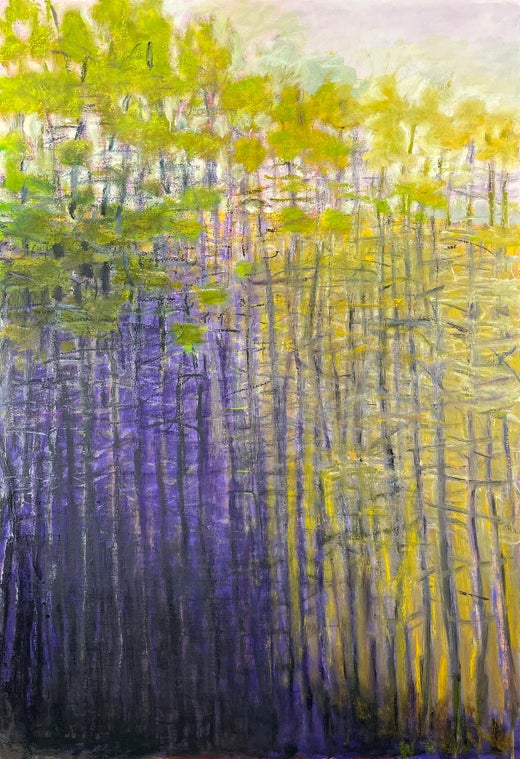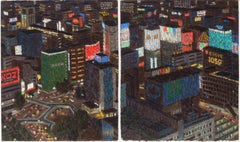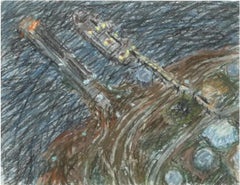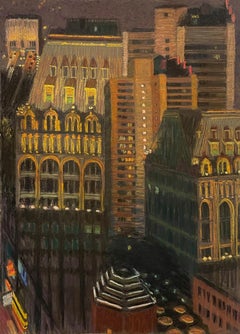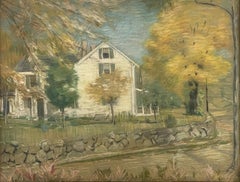Wolf Kahn"Summer Studio" Wolf Kahn, Vermont Landscape, Abstract Impressionist, Pastels2012
2012
About the Item
- Creator:Wolf Kahn (1927, German)
- Creation Year:2012
- Dimensions:Height: 18.5 in (46.99 cm)Width: 20.5 in (52.07 cm)
- Medium:
- Movement & Style:
- Period:
- Condition:
- Gallery Location:New York, NY
- Reference Number:1stDibs: LU1841213711672
Wolf Kahn
Born in Stuttgart, Germany, in 1927, Wolf Kahn fled Nazi Germany to Britain through the Kindertransport in the late 1930s. He eventually settled in the United States, where he completed high school and enrolled in the Navy. Following his service, he studied with the legendary teacher and Abstract Expressionist painter Hans Hofmann, eventually becoming his studio assistant.
In 1950, Kahn enrolled at the University of Chicago and completed his bachelor of arts degree within one year. He had his first solo exhibition at Hansa Gallery in New York City in 1953 and went on to be represented by Grace Borgenicht Gallery, where he exhibited regularly until 1995.
Kahn was the recipient of the Fulbright Scholarship, the John Simon Guggenheim Fellowship, the Award in Art from the American Academy of Arts and Letters, and the Medal of Arts from the State Department. He married the artist Emily Mason in 1957. Their marriage lasted sixty-two years until Emily’s death in December 2019, just a few months before Kahn's passing. The pair lived and worked between New York City and W. Brattleboro, Vermont.
Kahn’s work has been exhibited at galleries and museums throughout North America. His work is held in important museum collections including the Metropolitan Museum of Art, New York, NY; the Whitney Museum of American Art, New York, NY; the Museum of Modern Art, New York, NY; the Museum of Fine Arts, Boston, MA; the Hirshhorn Museum and Sculpture Garden; the Los Angeles County Museum of Art, Los Angeles, CA; and the Smithsonian American Art Museum, Washington, D.C.
Find authentic Wolf Kahn paintings and prints on 1stDibs.
(Biography provided by Miles McEnery Gallery)
You May Also Like
1960s Abstract Impressionist Landscape Paintings
Pastel, Archival Paper, Permanent Marker
2010s Abstract Impressionist Abstract Paintings
Pastel
Late 20th Century Abstract Impressionist Landscape Paintings
Pastel
21st Century and Contemporary Abstract Impressionist Landscape Paintings
Pastel
21st Century and Contemporary Abstract Impressionist Landscape Paintings
Pastel
21st Century and Contemporary Abstract Impressionist Landscape Paintings
Pastel
2010s Abstract Impressionist Abstract Paintings
Paper, Oil Pastel
21st Century and Contemporary Abstract Impressionist Abstract Paintings
Paper, Oil Crayon, Oil Pastel, Wax Crayon, Mixed Media, Wax, Oil, Archiv...
2010s Abstract Impressionist Landscape Paintings
Canvas, Oil, Oil Crayon
2010s Abstract Impressionist Abstract Paintings
Oil Pastel
More From This Seller
View All1980s American Modern Landscape Drawings and Watercolors
Paper, Pastel
1980s Modern Landscape Paintings
Paper, Pastel
1990s Modern Landscape Paintings
Paper, Pastel
1910s American Impressionist Landscape Paintings
Canvas, Pastel
20th Century Abstract Expressionist Figurative Paintings
Paper, Graphite
Mid-20th Century American Modern Landscape Paintings
Paper, Crayon
Recently Viewed
View AllRead More
This Wolf Kahn Pastel Is the Epitome of Beauty at Its Most Essential
A longtime admirer of Kahn’s work, 1stDibs editorial director Anthony Barzilay Freund explores why it’s relevant now more than ever.
Lincoln Glenn Gallery Rediscovers American Art That Time Forgot
Gallerists Douglas Gold and Eli Sterngass tell us how they uncover lost treasures by stellar artists from the past 160 years.
